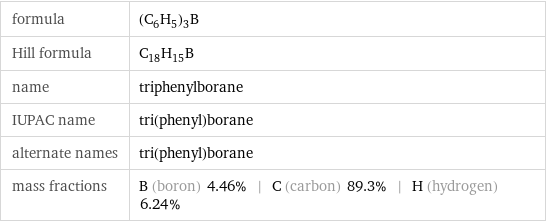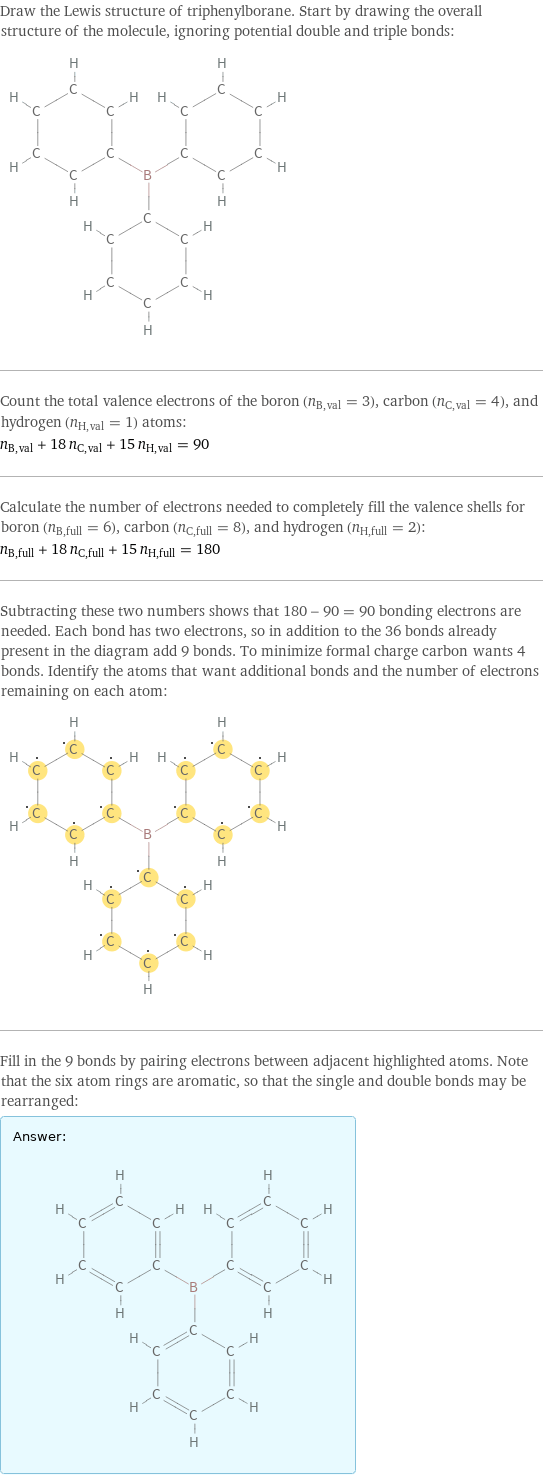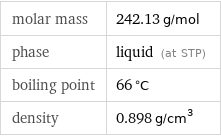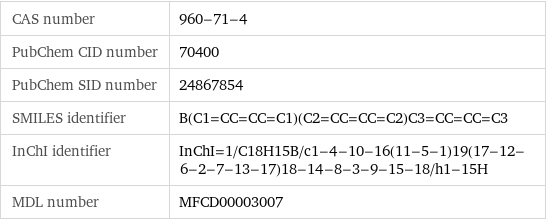Input interpretation

triphenylborane
Chemical names and formulas

formula | (C_6H_5)_3B Hill formula | C_18H_15B name | triphenylborane IUPAC name | tri(phenyl)borane alternate names | tri(phenyl)borane mass fractions | B (boron) 4.46% | C (carbon) 89.3% | H (hydrogen) 6.24%
Lewis structure

Draw the Lewis structure of triphenylborane. Start by drawing the overall structure of the molecule, ignoring potential double and triple bonds: Count the total valence electrons of the boron (n_B, val = 3), carbon (n_C, val = 4), and hydrogen (n_H, val = 1) atoms: n_B, val + 18 n_C, val + 15 n_H, val = 90 Calculate the number of electrons needed to completely fill the valence shells for boron (n_B, full = 6), carbon (n_C, full = 8), and hydrogen (n_H, full = 2): n_B, full + 18 n_C, full + 15 n_H, full = 180 Subtracting these two numbers shows that 180 - 90 = 90 bonding electrons are needed. Each bond has two electrons, so in addition to the 36 bonds already present in the diagram add 9 bonds. To minimize formal charge carbon wants 4 bonds. Identify the atoms that want additional bonds and the number of electrons remaining on each atom: Fill in the 9 bonds by pairing electrons between adjacent highlighted atoms. Note that the six atom rings are aromatic, so that the single and double bonds may be rearranged: Answer: | |
Basic properties

molar mass | 242.13 g/mol phase | liquid (at STP) boiling point | 66 °C density | 0.898 g/cm^3
Units

Liquid properties (at STP)

density | 0.898 g/cm^3
Units

Chemical identifiers

CAS number | 960-71-4 PubChem CID number | 70400 PubChem SID number | 24867854 SMILES identifier | B(C1=CC=CC=C1)(C2=CC=CC=C2)C3=CC=CC=C3 InChI identifier | InChI=1/C18H15B/c1-4-10-16(11-5-1)19(17-12-6-2-7-13-17)18-14-8-3-9-15-18/h1-15H MDL number | MFCD00003007
Safety properties

flash point | -17.22 °C